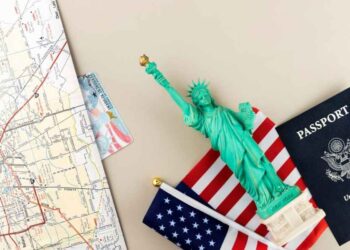Fingerprints usually get used by detectives to place criminals at crime scenes. The prints are unique to individuals. You can imply that someone was at a crime scene.
Forensic teams can find fingerprints and run them against a database. Prints are useful in building a list of suspects for an alleged crime.
To get convictions in criminal cases, you need to remove reasonable doubt.
But how damning are fingerprints? People have raised questions on the reliability and validity of fingerprints as evidence.
Are Fingerprints at the Crime Scene Enough Evidence?
Fingerprints are not enough to get a conviction. Forensic teams use fingerprints to build a list of suspects. These prints identify people likely to have been at the crime scene.
You need to prove beyond reasonable doubt that someone committed a crime. Fingerprints are usually not enough, and you can create reasonable doubt.
The Controversy Surrounding Fingerprint Evidence
Everyone has a unique set of prints. The prints leave impressions on the surfaces we touch.
Fingerprints are vital to criminal investigations.
The uniqueness of the prints isn’t a subject for debate. The arguments arise when people use prints in the legal context.
Fingerprints are not as reliable as was once thought. There have been several false prosecutions made relying on fingerprints. It is important. Court systems set definitive rules governing the use of fingerprints.
In most courts today, examiners don’t consider fingerprint evidence as reliable. There are still several convictions based on fingerprint evidence.
The most difficult sort of print to recognize is latent print. The prints are almost invisible to the naked eye. When sweat from the surface of the ridges forms impressions on surfaces, it forms prints.
Latent prints are undetectable to the naked eye. You must use a blue light at a particular wavelength to see them.
The American Association for the Advancement of Science researches fingerprint reliability. The body insists that fingerprint evidence must undergo thorough scrutiny to determine validity.
An assessment states that you can use fingerprints to drop several suspects. It helps investigators to narrow the suspect pool and hastens the investigation.
There is currently no data on the successful conviction rate with fingerprint evidence. PCAST reports that fingerprint validity could improve as technology gets better. Better technology can improve identification accuracy.
The AAAS further states that you cannot determine the source of a latent print. It implies that a print might have come from many people.
The prints, however, are not good enough to identify the one suspect. There is, therefore, a quality gap with fingerprint investigation.
The Rules Of Evidence
In a legal case, there are rules on evidence. Some conditions govern what the courts can accept or reject. Why do we have these rules? The Constitution requires that these rules are there to:
Remove expense and delay: The rules get set to promote your right to a speedy trial. There has to be a rule for what is admissible. It saves the court’s time as the prosecution has to narrow it down to acceptable proof.
Promoting law based on evidence: Rules of Evidence promote the rule of law based on evidence. It makes it so that you cannot get convicted unjustly. The accused knows the nature of the charges and the evidence supporting the charges.
All reports must have supporting evidence.
Securing a just verdict: Evidence is important in securing a fair case outcome. Rules of Evidence help give reasons for a verdict based on damning facts. It promotes justice and fairness. It sets the president for a working legal system.
The Rules of Evidence have a large scope. They apply in criminal and civil cases.
The defendant may ask a court of law to exclude certain evidence. The court may allow the request if the evidence breaches the defendant’s rights.
There are many rules for the court and defendant when deciding to include or exclude evidence. The court may give exclusion if:
- The defendant requested early.
- The defendant provides grounds for removing evidence.
Should a court remove evidence, it must communicate its reasons.
A defendant cannot request a court to remove evidence after a ruling. Even in cases where the defendant finds new evidence supporting exclusion.
The court has the right to make statements on the nature of evidence. It is an option and not a requirement for the courts to give statements on evidence objections.
The court should prevent the jury from being unfairly influenced by rejected evidence. The court should take all necessary steps to ensure such evidence is not in the trial.
The jury should exercise judgment to avoid influence by rejected evidence.
In an investigation, a court may notice an error interfering with the defendant’s rights. The court should keep search errors in mind when giving rulings.
Rules Of Initial Questioning
Before hearing any case, a court needs to establish certain principles regarding evidence. These rules apply in the course of proceedings. They include:
- Determining whether a witness qualifies.
- Determining if there is a privilege.
- Determining whether evidence qualifies.
In some cases, certain facts must be true for evidence to qualify. In the first questioning stage, the court decides whether said facts are true. The court then accepts evidence depending on its findings.
The court has the option to accept evidence later. It is the case when certain facts get proven true during the trial.
Certain limits apply to the jury during the first questioning. These limits prevent the jury from coming under the undue influence of rejected evidence. A jury gets excluded if:
- The preliminary hearing involves admission of guilt or a confession.
- The defendant requests a jury not to be present because they are a witness.
- Having a jury present interferes with justice.
During the first questioning, a defendant may remove themselves from future cross-examination. It only applies in criminal cases. It happens when a defendant testifies to questioning.
A defendant or accuser may bring evidence that challenges the credibility of the other party’s evidence.
Rules Of Character As Evidence
Character as evidence is a controversial topic. It is hard to judge character objectively. People can change their character. People also act out of character in some cases.
The courts generally don’t accept the character as evidence of criminal acts. Acting in line with one’s character is not evidence of a crime.
Three situations may allow character as evidence. All these cases apply if the defendant is a victim in a criminal case. They are:
- The defendant offers evidence. The prosecutor fails to offer evidence to challenge its credibility.
- The prosecutor offers evidence of a victim’s character trait in a homicide case. The prosecutor argues the victim wasn’t an aggressor by outlining their peaceful character.
- The defendant offered evidence of their character. The prosecutor agrees that the defendant is correct.
A previous wrong can’t prove that the defendant acted per their character.
Character evidence may be admissible in proving: Intent, motive, and identity. If it happens, the prosecutor must:
- Give the defendant about the nature and use of the evidence.
- Use the evidence before the trial starts.
Print Patterns
These small characteristics allow us to categorize fingerprints as whorl, arch, or loop. They are responsible for defining the print qualities.
Forensic experts use these print traits when collecting evidence. The fine patterns help establish a list of potential suspects in a criminal case.
These patterns get to run on a database to see if there are potential matches.
They are as follows:
- A ridge begins as a single line before spreading out and reconnecting as a continuous line.
- A dot is a ridge in the center of other ridges but does not connect.
- A spur is a small ridge that splits from a longer one. It does not join neighboring ridges.
- Independent ridge: A minor ridge that occurs between two major ridges. It does not connect to either of them.
- Core: They are star print, from which a circle loop may arise.
- Delta: A Y-shaped structure formed by the convergence of two ridges.
- Ridge endings: The points at which ridges come to an end.
- A cross-over is a little ridge that joins two parallel ridges.
- A bifurcation is a ridge that divides into two distinct ridges.
Conclusion
Detectives use fingerprints to identify perpetrators at a crime scene. Individuals’ prints are unique. As a result, you can tell that someone was there at a crime scene.
Forensic teams can find fingerprints and compare them to a database. Prints can help you compile a list of potential suspects for a crime.
Fingerprints alone will not result in a conviction. The prints show persons who were most likely at the crime scene. You must prove, beyond a reasonable doubt, that someone committed a crime. Fingerprints are not enough. You can raise reasonable doubt.










